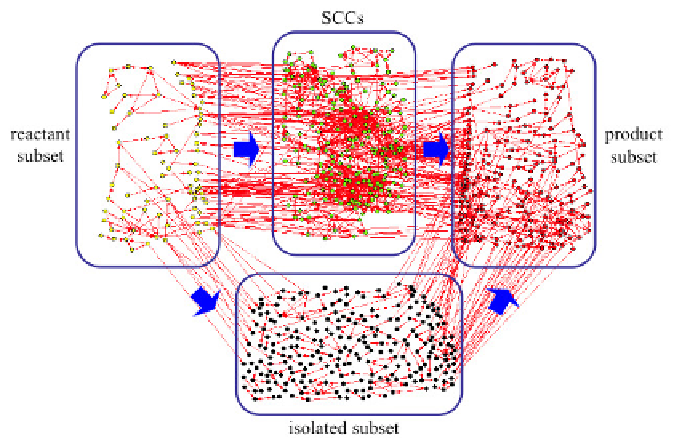Information Technology Reference
In-Depth Information
respect to SCCs but nevertheless they have the same kind of links with both
sources and sinks than SCCs.
There are two kind of redundancies in the metabolic network wiring: the first
kind deals with the multiplicity of edges (enzymes) connecting the same two
nodes
i
and
j
. This multiplicity stems from the existence of the so called
isozymes, distinct enzymes able to catalyse the same chemical reaction. Even if
the members of an isozyme family can differ in terms of kinetic parameters and
thus of the efficiency of the reaction, nevertheless each member can guarantee
the transformation of the metabolite
i
into metabolite
j
. The second kind of
redundancies deals with reactions: same enzyme can catalyse different reactions.
This implies the same molecular entity (a protein) acts as the arc connecting
metabolites
i
and
j
in one portion of the network and as the arc connecting
metabolites
k
and
d
in another portion.
The main differences between the metabolic networks of different species are
in the reactants and product subsets, while the SCCs and isolated subsets share an
elevated degree of similarity.
In the following section we will take into consideration the results of some
experiments conducted on metabolic networks so to elucidate some emergent
features of this particular kind of biological network system.
Fig. 8.2. General representation of a metabolic network. On the top, the SCC module corresponds
to strongly connected components; on the left there is the 'reactant' subset (sources); on the right,
the 'product' subset (sinks); the 'isolated' subset is on the bottom.

